Managing hotel content across multiple suppliers, OTAs, and booking platforms is a daily challenge for channel managers. Every property needs to appear with the right description, images, and rates without duplicates or gaps. When data is not aligned, it can result in booking errors, lost revenue, and a poor experience for travelers.
Channel mapping is the process that keeps all this information consistent. By matching and organizing property records from different sources into a single, reliable view, it ensures accuracy and smooth distribution across every channel.
This article explains what channel mapping is, why it matters for travel businesses, and how a well-structured approach can help channel managers reduce manual work, maintain clean data, and support better booking outcomes.
What Is Channel Mapping?
Channel mapping is the process of aligning hotel data from multiple sources into one standardized record. It gives channel managers a single source of truth for property information, making it easier to distribute consistent content across booking platforms, OTAs, and supplier systems.
At its core, mapping connects disparate identifiers, descriptions, images, amenities, and rate plans to the right property. Without it, the same hotel can appear under different IDs or with conflicting details, creating duplicate listings and confusion for both travelers and operations teams.
Consider a popular scenario: two suppliers provide inventory for the same boutique hotel, but one lists it as “Seaside Retreat” while the other calls it “The Seaside Hotel.” If these records are not mapped correctly, the property may show up twice in your catalog or even allow double bookings. Proper channel mapping resolves this by linking both feeds to a single master record, keeping content and availability consistent across every channel.
It is more than matching names in spreadsheets. It relies on robust data models, automated rules, and, increasingly, the right AI-native mapping solution to detect duplicates, resolve conflicts, and maintain accuracy as supplier feeds evolve. For channel managers handling high volumes of content, precise channel mapping ensures that updates flow smoothly across systems, supporting faster onboarding, reliable availability, and a better booking experience.
Channel Mapping vs. Hotel Mapping: Are they similar?
Yes, channel mapping and hotel mapping are closely related, but they’re not always identical. Here’s how you can think about the two:
Hotel mapping usually refers to the process of matching hotel/property data from multiple suppliers to a single, accurate record. It focuses mainly on property-level information: names, addresses, geocodes, images, amenities, star ratings, etc.
Channel mapping is broader. It includes hotel mapping but also covers how that clean data is connected to different distribution channels (OTAs, wholesalers, direct booking engines, GDS, etc.). It’s about ensuring not just the property information, but also rates, inventory, and policies are correctly linked and updated across every channel.
For many channel managers, “hotel mapping” is a core part of channel mapping, but the latter also deals with operational rules, channel-specific IDs, and content distribution workflows.
With that clarity, let’s move on to understanding why channel mapping is a significant component of any travel business.
Why Channel Mapping Matters for Travel Businesses
Getting property data from suppliers is only the first step. Without a reliable way to organize and align that information, even the best content can create confusion across booking channels. Channel mapping plays a central role in turning scattered supplier feeds into a single, dependable view that supports revenue, efficiency, and customer satisfaction. Its impact can be seen in several key areas:
- Improves Data Accuracy
Accurate data is the foundation of every successful distribution strategy. Channel mapping eliminates duplicate or mismatched property records by consolidating supplier feeds into a single, verified source. This prevents errors such as wrong addresses, inconsistent star ratings, or outdated photos. Clean data gives travelers confidence in what they see online and reduces costly corrections for support teams and operations. - Streamlines Operations
When hotel information is properly mapped, updates from suppliers flow automatically to all connected systems. Channel managers no longer spend hours reconciling IDs or manually uploading content. Streamlined mapping shortens the time needed to onboard new properties and keeps inventory, rates, and content aligned across OTAs, wholesalers, and direct channels. This efficiency frees teams to focus on revenue strategy and partner relationships instead of repetitive data cleanup. - Maximizes Revenue Opportunities
Effective mapping ensures availability and rates remain synchronized across every sales channel. This protects against under- or over-selling inventory and enables dynamic pricing strategies. Accurate alignment of promotions, room types, and packages helps businesses capture more bookings at the optimal price. Channel managers gain confidence that revenue decisions are reflected instantly and consistently wherever customers search and book. - Enhances Traveler Experience
For travelers, inconsistent hotel content can lead to uncertainty or booking mistakes. Channel mapping guarantees that property descriptions, images, amenities, and policies match reality, no matter where a customer finds the listing. By presenting clear, reliable information, businesses build trust and reduce post-booking complaints or cancellations. A smoother experience strengthens brand reputation and encourages repeat bookings through any distribution point. - Supports Scalability and Growth
As travel businesses expand their supplier network or add new regions, the volume and complexity of data increase. Robust channel mapping processes scale alongside growth, automatically aligning new properties with existing systems. This stability allows companies to pursue partnerships or diversify channels without jeopardizing data quality. A solid mapping framework provides the confidence to innovate while maintaining consistent, high-quality content across a larger footprint.
Channel mapping is not just a behind-the-scenes process; it is a strategic enabler of efficiency, revenue, and customer trust. To get the best results, channel managers need a clear roadmap for maintaining accuracy, automation, and control. The next section outlines practical best practices that help you build and sustain a strong mapping framework.
Best Practices for Channel Managers
Implementing channel mapping effectively requires more than the right tools. It calls for a disciplined approach to data management and ongoing collaboration across teams and partners. These best practices can help channel managers maintain accuracy, efficiency, and scalability as they manage property content across multiple distribution channels.
- Audit and Cleanse Your Data Regularly
Begin with a thorough review of existing property records and supplier feeds. Identify duplicates, outdated content, and inconsistent IDs before integrating new sources. A periodic data audit keeps your master catalog accurate and makes mapping more reliable, reducing downstream errors. - Prioritize High-Value Channels
Not all channels have the same impact on bookings or revenue. Focus your initial mapping efforts on platforms that drive the greatest business value, such as major OTAs, wholesalers, or direct booking engines. Ensuring these connections are clean and consistent lays a strong foundation for expanding to secondary channels. - Automate Where Possible
Manual reconciliation is time-consuming and prone to errors. Use technology that automates the identification and linking of property records. Machine learning and rules engines can detect subtle discrepancies across supplier feeds, making mapping faster and more precise. Automation frees up resources for strategy and partner engagement. - Establish Clear Governance Processes
Define who owns data quality, how mapping changes are approved, and how exceptions are handled. A clear governance framework prevents inconsistent updates and helps teams respond quickly when suppliers modify content or IDs. Documented processes also support training as new team members join. - Monitor and Measure Performance
Track key indicators such as mapping accuracy, onboarding time for new properties, and error rates across channels. Regular reporting highlights gaps and helps refine your approach. Sharing performance metrics with suppliers and technology partners creates a feedback loop that improves data quality over time.
With a combination of these practices and the right mapping technology, channel managers can build a resilient content distribution framework that supports growth and reduces operational risk. Solutions like Vervotech’s mapping platform use advanced algorithms and curated data sources to help teams maintain accuracy and consistency at scale- an advantage worth considering as you refine your own processes.
Take Away
Channel mapping is more than an operational requirement; it is a strategic capability that supports clean data, efficient distribution, and a reliable booking experience for travelers. A thoughtful mapping strategy helps channel managers cut down on repetitive work, protect revenue streams, and create room for innovation as their businesses grow.
A strong framework, paired with consistent best practices, ensures that property information remains accurate and synchronized even as supplier feeds evolve or new channels are added. Taking time to review existing processes and assess whether advanced solutions such as Vervotech’s mapping technology can strengthen your approach is an important step toward a resilient, scalable distribution network.







